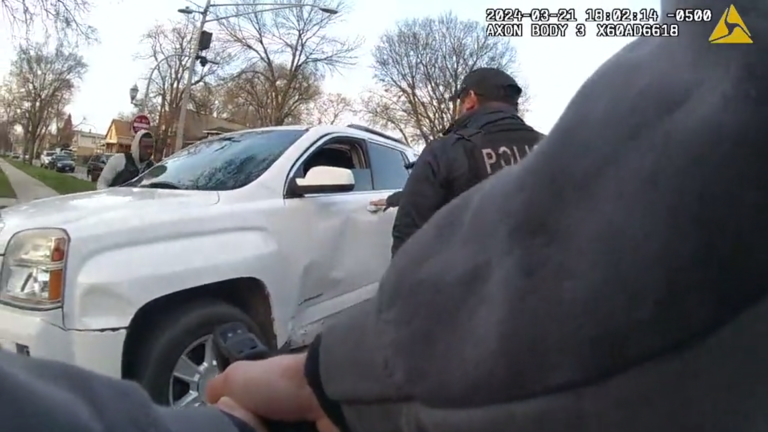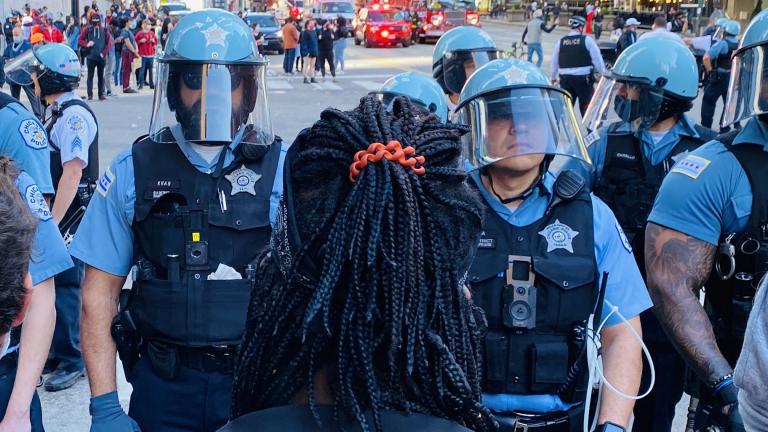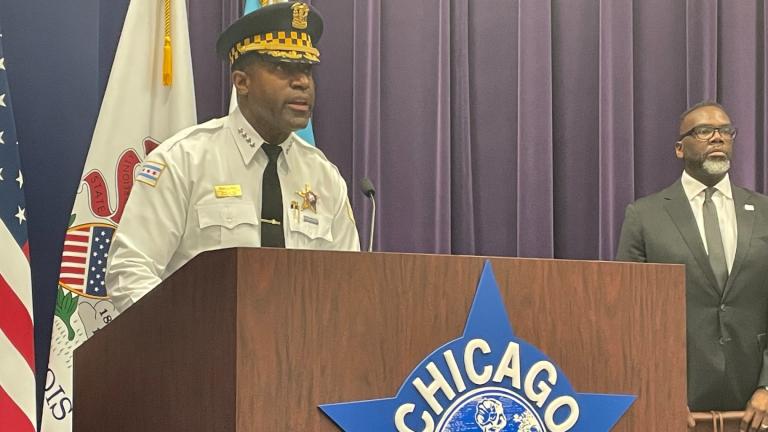A new study from researchers at the University of Chicago Crime Lab has found a training program rooted in behavioral science can dramatically cut the number of times police officers use force while also increasing officer safety.
The program, known as Situational Decision-making, or Sit-D, is focused on improving officer decision-making when handling difficult and stressful situations on the job.
“We find that the training leads to reductions in two key adverse outcomes. First, it reduces uses of non-lethal force by 23%,” the report states. “Second, we also examine Sit-D’s effects on a pre-specified category of discretionary arrests, which include charges such as disobeying a police officer and disorderly conduct. Many of these arrests likely stem from officers’ emotional responses, such as frustration with a subject’s behavior. We find that the training leads to a 23% reduction in these discretionary arrests.”
UChicago researchers piloted the program with more than 2,000 sworn Chicago police officers from 2020-21. During that time, classroom lectures, scenario-based simulations and after action debriefings were used to help officers rethink the way they approach high-stakes situations to avoid certain pitfalls.
Rather than a use-of-force training, Roseanna Ander, who heads the University of Chicago Crime Lab, said this program is more focused on helping officers make better decisions in these scenarios.
“It was really designed to meet the needs of a modern day police department,” she said.
One scenario included in the study involved an officer who encounters a man shouting in a dark alley and sees a glint of something in the man’s hand, which could cause the officer to draw and possibly fire their weapon.
In a second situation, an officer sees a teenager toss a bottle, but when the officer calls out and attempt to initiate a stop, the teen takes off running, causing the officer to chase after and arrest them, not for littering, but for obstructing an officer.
“Despite the differences in severity, both scenarios produce adverse consequences,” the report states. “This response can be particularly consequential in the policing context. Officers often need to think through multiple alternative interpretations, or different explanations for unfolding events. For example, they may need to reconsider critical details which affect the level of force they use, or consider different perspectives on why the subject is behaving in a particular way.”
According to the study, Sit-D training attempts to help officers go beyond their initial impression of events in these scenarios.
Ander said there’s little training available to help guide an officers’ response in high-stakes situations. In this study, researchers brought in behavioral scientists to help explain how the human brain works and why people make decisions they do.
“It really allowed the officers to learn some of these concepts, test them in the real world, come back and debrief and then refine that,” she said.
Beyond the reductions in use of force and discretionary arrest, the researchers found Sit-D also led to fewer racial disparities (specifically, there were fewer arrests of Black civilians without an equivalent reduction in the arrests of others), fewer officer injuries and no declines in the number of other policing activities such as firearm recoveries, drivers’ stops, warrants, citations, and all non-discretionary arrests.
“The findings from the Sit-D evaluation show important promise for police officer training, and CPD is proud to have piloted it with our officers,” Larry Snelling, who is set to become Chicago’s next police superintendent, said in a statement. “Since the Department has overhauled its Use of Force policies we have increased and expanded training for all officers. Sit-D is a unique innovative training to re-enforce our policies and ensure that officers have the skills they need to serve the communities they live and work in.”
The Chicago Police Department remains under federal oversight through a consent decree, which required policy reforms in various areas including use-of-force. The Sit-D program also counts toward a set number of training hours officers are required to undergo each year as part of the consent decree.
Ander said there was tremendous buy-in from the officers who took part in the training. While this program has only been piloted thus far, she hopes it can be used again by the CPD — and other law enforcement agencies at the local, state and federal levels — going forward.
“I think it’s very easy to look at the state of either public safety or policing and feel very pessimistic,” Ander said. “I just think this should give us all hope that we can have a really high quality public service on public safety in ways that minimizes harm to communities, but also (is) good for officers who go into this work to serve their communities and often are not given the sort of skills and tools and training that they need to be able to do it well.”
Contact Matt Masterson: @ByMattMasterson | [email protected] | (773) 509-5431








